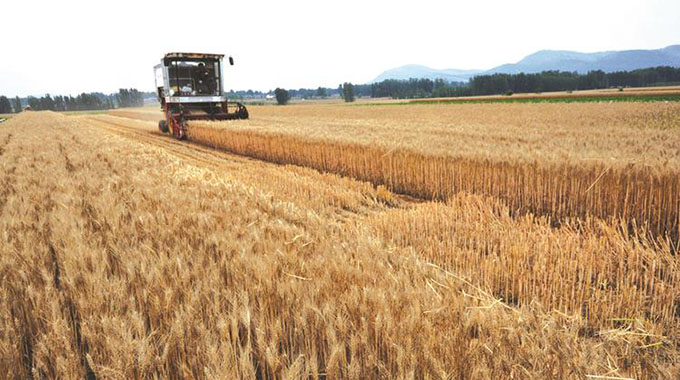
BEIJING. — The Ministry of Commerce (MOC) said yesterday that it is a “high-probability event” that the country will see a bumper grain harvest in 2020 as ample reserves and stable agricultural production ensure self-sufficiency amid the novel coronavirus disease (COVID-19) pandemic.
“China has seen a pretty long streak of bumper years, with inventories and reserves abundant and grain price consistently stable,” MOC official Wang Bin told a news conference when answering a question regarding domestic concerns over food shortage fueled by bans on food exports by major producers around the world.
China, the world’s top food producer and consumer saw its grain output reach a record high of 664 million tonnes last year, the 16th bumper year in a row, he said.
“By the end of last year, the country had inventories of more than 280 million tonnes of wheat, corn and rice, which will enable complete self-sufficiency as the average annual consumption of grain hovers above 200 million tonnes,” he said.
“The international market’s impact on the country’s grain supply is minimal.”
The country’s grain imports are mainly fodder grains such as soybeans, with imported rice and wheat accounting for only 1 percent and 2 percent of the total domestic consumption, respectively, Wang said.
“Even zero imports will not lead to a shortage of grain supply in China,” he said. “Consumers do not need to worry about the shortage or price spike of grains. They do not need to buy in bulk or hoard food at home.”
Rice is a staple food in China, whose total grain output consists of three parts — early rice, summer grain, and autumn production. Autumn grain crops, which include corn and middle- and late-season rice, account for the bulk of the grain production.
An analysis by the country’s agriculture ministry points to greater early rice acreage and yield, a bumper summer grain harvest, and well-planned purchases of autumn grain this year, all signs of a generally sound trend of the country’s grain production this year, Wang said.
“Wholesale and retail markets around the country have sufficient supply of rice, flour and edible oil, and the prices remain stable,” Wang said.
“Grain production and processing enterprises are resuming production with sound progress, and the sector’s production capacity is sufficient.”
The Covid-19 pandemic prompted multiple countries to throttle the outflow of grains. Kyrgyzstan, for example, imposed a temporary ban on the export of certain types of food products and essential goods over Covid-19 concerns.
The ban list includes wheat, flour, vegetable oil and rice.
“Export bans by some countries were imposed mainly to prioritize domestic food needs, and we do not expect the majority of food exporters to follow suit,” Wang said.
China has already taken multi-pronged measures to ensure stable spring farming.
A special guideline on coordinating the novel coronavirus control measures with spring farming preparation was issued in early March to ensure the country’s agricultural production.
All provincial-level regions should keep their sown areas and grain output stable, on par with that registered last year, and efforts will be made to fully implement support policies such as the minimum purchase price for rice and wheat to motivate farmers to secure a bumper harvest, said the guideline issued by the leading group of the Communist Party of China Central Committee on the prevention and control of the novel coronavirus outbreak.
The Agricultural Development Bank of China, an agricultural policy bank, said in late March that it had provided 22,67 billion yuan (about 3,19 billion US dollars) in loans to support spring farming, with 6,92 billion yuan going to support agricultural means of production such as seeds, fertilisers, agricultural machinery, and agricultural science and technology. — Xinhua.
